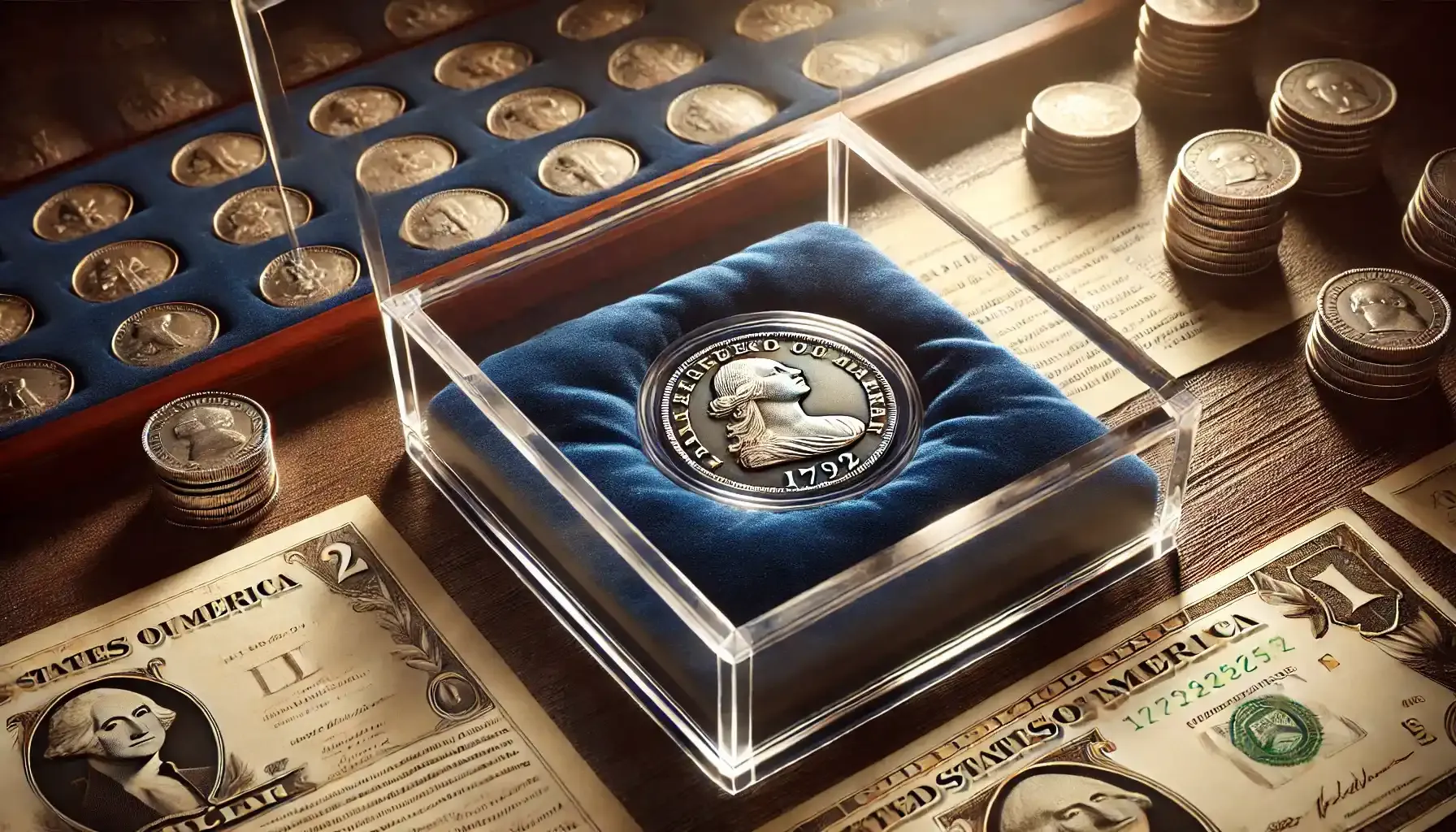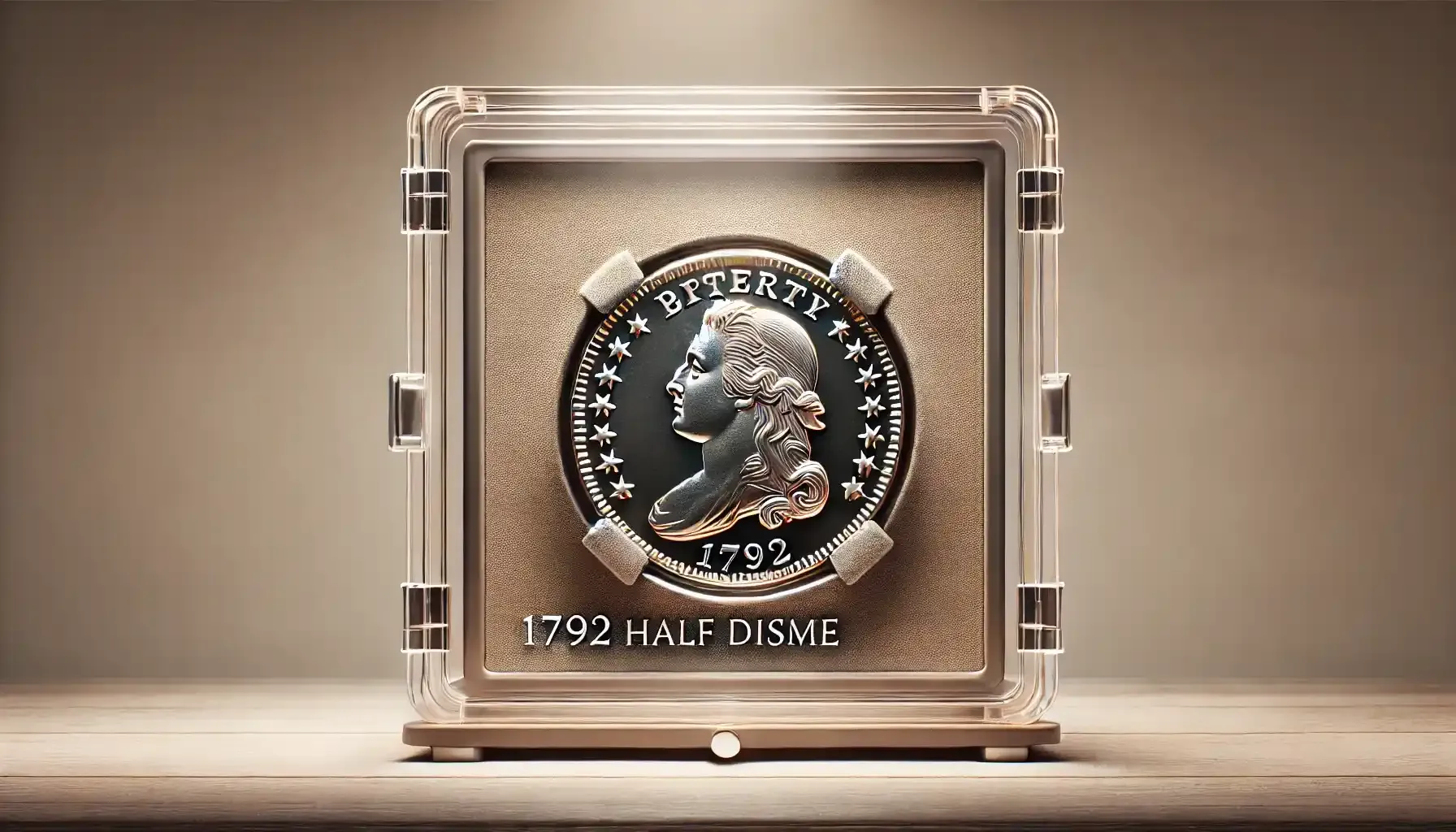Contents:
Let's imagine the year 1792. America is a young country that barely had time to establish its independence. This historical period was the beginning of a new nation, but also the starting point in the creation of the American monetary system. The focus is on the first official silver coins of the United States, called half dime 1792 (the year is just an example), which became a true legend after the passage of time.
However, today many people confuse this one with the non-existent “1792 Dime”. So, let's understand what caused the confusion, how to identify these coins, what are their differences and consider interesting facts about the "firstborn" of the American coinage system.

The Advent of Half Disme: Craft and Symbolism
Prior to the creation of the half disme, the United States did not have its own stable currency. Foreign pieces were used in commerce and daily circulation, causing a lot of inconvenience to the growing economy. In 1792, the U.S. Congress passed the Coinage Act to create a national monetary system.
Among the first coins was the half dime, which had a face 1792 half dime value, i.e. five cents. It was the first official silver piece of the United States.
How many 1792 half disme coins were produced? It is believed that about 1,500 to 3,000 half dismes were produced, although the exact number is unknown. But it is worth noting that the minting was done virtually by hand in a house in Philadelphia, as the US Mint did not officially begin operations until 1793.
Despite its modest size, the half disme gained tremendous significance. Over time, it became clear that it had more historical value than monetary one. This small piece of silver represented the American idea of independence, progress, and a willingness to evolve.

What About 1972 Dime Coin?
The 1792 half disme is often mistakenly taken and referred to as another one, the 1 dime, which is fundamentally incorrect. Historians and collectors have repeatedly raised the issue of the confusion between the two pieces, as the half disme and later dime coins may belong to the same category of small ones in terms of size and denomination.
So, what's wrong with the 1972 dime? Did you know that the 1792 Coinage Act also called for a 10-cent coin, i.e. the dime, but at that time the concept of the dime was still in development, and the technical standards and design were not finalized until 1796.
Thus, in 1972, dimes of that kind did not really exist but the 1972 Lincoln penny did, and this is yet another story to retell.
Characteristics and Design
The 1792 half disme is a nifty little one with symbols that reflect the spirit of the new American nation. And due to its unique characteristics, it became incredibly valuable and interesting to study. Below in the table you may find basic information about it.
Characteristic | Description |
Denomination | 5 cents |
Composition | Silver (about 89%) |
Diameter | 17.5 mm |
Weight | 1.3 g |
Design | The obverse depicts Lady Liberty (= 1792 bust half dime), a symbol of a new nation looking to the future. Around her is engraved the inscription “LIBERTY PARENT OF SCIENCE & INDUST”, which symbolizes faith in progress, science and industrial development. |
The reverse depicts an eagle (i.e. a symbol of strength and protection), showing the important role of the young nation. It also features the inscription “UNITED STATES OF AMERICA”, the denomination “HALF DISME” and a star below the eagle. | |
Minting figures | 1500–3000 exemplars (true number is unknown) |
Although it is real and officially known, the story of its creation holds as much mystery and legend as the notoriously defunct 1972 Dime. Some claim that the image of Liberty was based on the image of First Lady Martha Washington, and that the coins saw the light of day due to the fact that George and Martha Washington donated the family silver for their minting. However, there is no hard evidence to support the theory.
Some also believe that the coin had more historical than monetary value, although its characteristics are unique. According to legends, the first 1792 half disme coins were used by the president for diplomatic gifts and circulated among the dignitaries of the time.
But what is really true is that the design of this coin, although simple, became the prototype for future minted images in American numismatics. Despite its tiny size, the Half Disme was a real point of pride. Its creation was the first step toward an independent monetary system.
Half Disme Legacy: Appeal and Estimated Value
When it comes to 1792 half disme, “how many pieces are preserved?” and “is it possible to find a half disme coin for sale today?” questions may instantly arise. So let us explain in detail.
According to some historians' estimates, only 10% of the total number of half dimes 1792 have survived and reached our time. This is why today the 1792 half dime is not just a rarity, but an extremely valuable investment object.

How much is a 1792 coin worth? It reaches incredible prices at auctions, often exceeding hundreds of thousands of dollars. The price is highly dependent on the condition and degree of preservation, as well as the provenance (proven ownership history).
Estimated 1792 half disme value depends on the condition:
Grade | Estimated Value (USD) |
Good (G) | $150,000 – $250,000 |
Very Fine (VF) | $300,000 – $450,000 |
Extremely Fine (EF/XF) | $500,000 – $700,000 |
About Uncirculated (AU) | $800,000 – $1,200,000 |
Mint State (MS) | $1,000,000 – $1,500,000+ |
Where to find 1792 half disme for sale? Copies of this coin can be found at auctions. Today there are only a few dozen of them in various states, from perfectly preserved (which is extremely rare) to heavily worn.
The coin remains one of the most desirable among collectors and investors due to rarity and uniqueness. The same factors ensure its high price stability and make it an attractive investment.
A Small Piece with Big History
Today, the 1792 half disme is more than just a piece of silver; it is a symbol of a budding nation and the first step toward the creation of an independent American monetary system.
And now its rarity and historical significance make this half dime the brightest trophy for collectors around the world.
If you too are interested in immersing yourself in history through rare specimens such as the 1792 disme or, for example, 2000 Massachusetts Quarter P, the Coin ID Scanner app will be your indispensable pocket assistant in identifying, clarifying the right information about a coin and even its market value, making your hobby even more convenient and easier.



